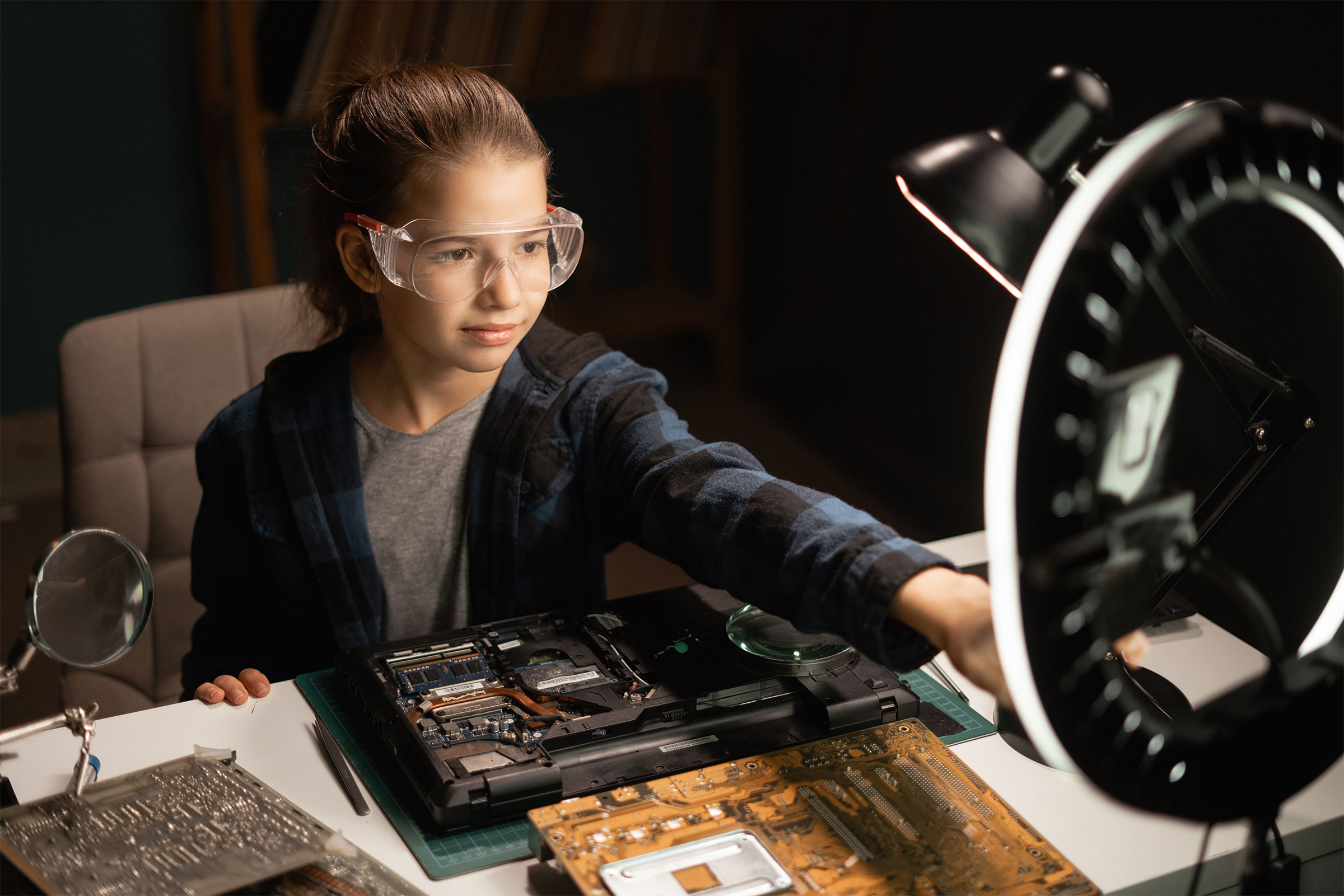Generational years are identified groups of people that have lived through similar time periods based on their ages. Their cultures-attitudes, behaviours, and beliefs-are shaped by their social communities during their developmental years. As a trainer, I feel it is important to understand who my students are so I can find ways to connect with them. I do not claim to be an expert in Gen Z (also called Zoomers) but starting my Montessori journey with this particular generation has made me curious about them as adults. I’ve provided just a few things I’ve learned about this generation that have helped me adapt aspects of my training course to include their unique interests, abilities, and culture from their time and place into the Montessori training space. This article reflects techniques and cultures based in areas of the United States and Europe where I have trained.
1. Use of technology. Considered as “digital natives”, it appears that Gen Z expects technology use and tools to be utilised to deliver content in a variety of ways. They have always lived in a world of technology and much of their culture has been built using technology. Using technology as a learning tool can enhance their experience in Montessori training by using apps, platforms, and other technology tools to connect them with training content. Finding a balance of technology use in training courses can be a challenge. However, providing options can help students feel their needs are met. For example, creating dynamic micro-modules with interactive elements can satisfy those who enjoy visual and interactive digital tools. The key is providing the same information in a variety of ways.
2. Use of audio and visual tools. Most Gen Z are visual and kinesthetic learners, they learn through watching and doing. Much of their “watching” has come in the form of videos or reels. Audio and visual recordings can provide a way for students to access content repeatedly. Using video for material demonstrations or short, concise video clips to talk about Montessori theory can provide opportunities to revisit the lesson material. Captioning or transcripts are often helpful for students who need that support, so ensure you take time to caption your videos and provide written transcripts of the audio. Keep in mind that most students still want to feel connected with the trainer and their peers, so ensure that synchronous sessions include demonstrations of materials and class discussions. Providing videos for Montessori theory or material demonstrations during training can guide students toward authentic AMI practices.
4. Collaborative work. Gen Z is also considered to be the most “connected” generation but that does not necessarily mean they make these connections all in a “face to face” format. Gen Z are considered experts in making connections with people, building relationships, and communicating with people all over the world through social media, influencing, and by other digital means. In training courses, finding ways to promote collaboration in both face to face and digital means offers opportunities for students to work together in a variety of modalities.
5. Learning Activities vs. Engagement Activities. I have noticed that most of my students love to learn! They love the learning process, they enjoy class sessions, and they engage in small and large group discussions. However, the “homework” and assignments are not anyone’s favourite part of training. I think what is true for most students is that homework is meaningless unless they find value in it, which is often measure by its relevant and immediate applicability. You might also diversify assignments by including a variety of assignment types such as short essays or reflections, illustrations, outlines, mind maps, or free choice.
6. Be Relatable and Relevant. Students in Montessori training courses may have limited experience in Montessori, but some may have a lot of experience and are currently working with children! For those with experience, it is easier to integrate their knew Montessori knowledge into direct application. But for those who may be new to Montessori and do not have experience, they rely on the trainer’s and other students’ experience, to set their foundation. However, when I share stories or provide my experience that seems dated or out of touch with their reality, both types of students do not view my experiences as relevant. Recognising that I may not be the most relevant person to talk about current challenges in the environment, I invite the sharing of experiences among peers to acknowledge they have experiences that might be helpful for others.
AMI training courses continue to be innovative in their offerings to adapt to the present and future cultures that embark on the Montessori teacher training journey. No matter what age students are in Montessori training courses, they will all be serving the same generation of children (assuming they enter the Montessori environment directly after training). For anyone who is a Montessori teacher trainer or working with adults in any capacity, I leave you with the same questions I continue to ask myself:
- How relatable am I to my current students’ generational cultures, attitudes, and perspectives?
- How much of my own learning preferences and styles influence the way I deliver the course?
- How “old” are the stories I share from my own classroom experience? Are they still relevant to the children my students will be working with today?
- What do I need to know about this generation, and the children with whom they will work, to support them during and after training?
- How often do I observe AND interact with children, or converse with current guides to understand their current challenges in environments?
Tiffany Liddell, AMI 3–6 Trainer
